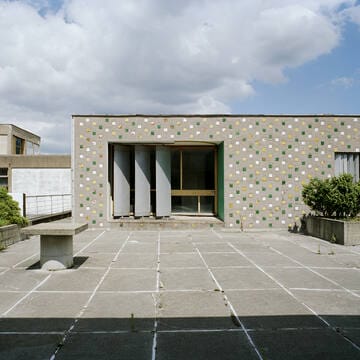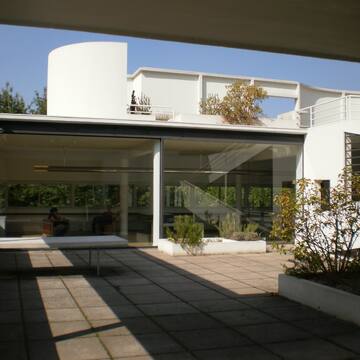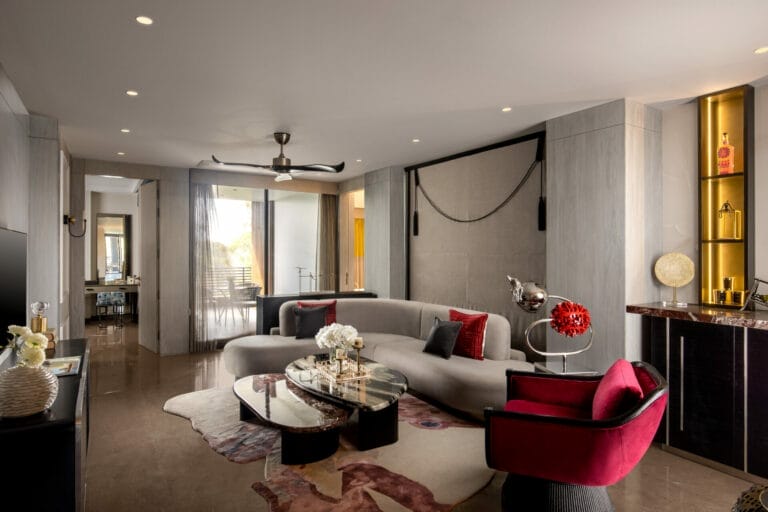The works of architect Le Corbusier, spanning eleven countries on four continents and implemented over a period of half a century, refer to the internationalization of architectural practice across the entire planet.
The seventeen sites of the UNESCO World Heritage in the Modern Movement represent an outstanding response to some of the fundamental issues of architecture and society at the beginning of the 20th century. These sites were innovative in reflecting new concepts, had a significant influence over wide geographical areas and together disseminated ideas of modern architecture throughout the world. As a major socio-cultural movement, Modernism has remained essential to architectural culture through the 21st century.

The Modern Movement in architecture developed jointly from the 1910s to the 1960s, aiming to meet the challenges of contemporary society, invent a new architectural language, modernize architectural techniques, and promote humanism. This series aims to provide an outstanding response to all these challenges.
The Villa Savoye has held an iconic status among the Modern Movement’s most well known residences. The Unité d’habitation in Marseille became a major prototype of a new housing model based on a balance between the individual and the collective; the Chapelle Notre-Dame-du-Haut for its revolutionary approach to religious architecture; and the Cabanon de Le Corbusier as an archetypal minimum cell based on ergonomic and functionalist approaches. The Maisons de la Weissenhof-Siedlung, which were included in the Werkbund exhibition, became better known worldwide.

Other museums were catalysts for the diffusion of new ideas across their regions, such as the Maison Guiette in Belgium and the Netherlands, which spurred the development of the Modern movement; the Maison du Docteur Curutchet in South America, which exerted an important influence on that continent; and the Musée National des Beaux-Arts de l’Occident as a prototype for transnational museums.
The Villa Savoye, located just outside Grenoble, is an early expression of the principles of the architect Le Corbusier. His broad vision of a new architecture was transcribed iconically in the Cabanon de Le Corbusier and in the Immeuble locatif à la Porte Molitor. Examples of these principles are also applied to residences, both private and institutional, such as the Musée National des Beaux-Arts de l’Orient and the Cité Frugès. In 1945 Le Corbusier published his fundamental work Towards an Architecture, in which he defined architectural principles that would guide his projects over the next 40 years of his practice.

Some Modernist buildings, including the Maisons La Roche et Jeanneret, Cité Frugès and the Maison Guiette, introduced an element of Purism to the movement; the Unité d’Habitation played a leading role in promoting Brutalism as a form, while the Chapelle Notre-Dame-du-Haut and the Capitol Complex promoted sculptural forms of architecture.
Experimentation and innovative use of materials is evident in the independent structure of concrete beams in the Maisons de la Weissenhof-Siedlung, while prestressed reinforced concrete was used in the Couvent de La Tourette. Concerns for natural air-conditioning and energy saving led to the use of sunscreens, double-skinned roofs, and reflecting pools in the Capitol Complex.
The need to standardize design during the late 19th century gave rise to such concepts as the Unité d’Habitation de Marseille, a prototype intended for mass production, while the Petite villa au bord du lac Léman set out the standard for a single span minimal house, and the Cabanon de Le Corbusier presented a standard, minimal unit for living.
The idea of buildings designed around the new needs of man in the machine age is exemplified in light new workspaces in Manufacture à Saint-Dié, while avant-garde housing at Cité Frugès and Maisons de la Weissenhof-Siedlung demonstrate how new approaches were not intended for a tiny fraction of society but instead for the population as a whole. By contrast, Immeuble Clarté was intended to revolutionise middle class housing.

The Athens Charter, as revised by Le Corbusier, promoted the concept of balance between the individual and the collective, and had its prototype in the Unité d’habitation, while the Capitol Complex, the focal point of the plan for Chandigarh, is seen as an example of ideal urban design.
Criterions :
- The work of Le Corbusier, fully realized in such notable structures as the Unité d’Habitation (Unité) housing project in Marseilles, France, from 1927 to 1937 and the Villa Savoye in Poissy, France from 1925 to 1931, has provided an outstanding response to certain fundamental architectural and social challenges of the 20th century.
- The Architectural Work of Le Corbusier demonstrates an unprecedented interchange of human values with respect to the birth and development of the Modern Movement. The groundbreaking book caused an unprecedented revolution in architecture by demonstrating the invention of a new architectural language that broke away from traditional styles.

The birth of three major trends in modern architecture: purism, brutalism, and sculptural architecture from architect Le Corbusier is a new phenomenon in the history of architecture.
- Le Corbusier’s work of architecture is directly and materially associated with ideas of the Modern Movement, a cultural phenomenon that became extremely influential in the 1920s and 1930s. The series represents a luxury that reflects an artistic synthesis. Le Corbusier’s ideas were powerfully relayed by the International Congress of Modern Architecture (CIAM), an influential gathering of artists and architects.
The contributions made by the Architectural Work of Le Corbusier are not merely the result of an exceptional achievement at a given moment, but the sum of designs painstakingly disseminated worldwide for over half a century.
Integrity:
The integrity of the series as a whole is adequate to demonstrate the way Le Corbusier’s buildings reflect not only the development and influence of Modernism but also its spread around the world.

The integrity of most of the component sites is first-rate. At Cité Frugès, within the property, new buildings on three parcels of the site are inconsistent with the architect’s concepts. At Villa Savoye, as well as at the adjacent gardener’s house, integrity is partly compromised by structures built in the 1950s that surround the villa. The integrity of the model settlement at the Maisons de la Weissenhof-Siedlung has been affected by the loss of ten houses out of twenty-one.
At the Chapelle Notre-Dame-du-Haut, where Le Corbusier’s structure was built over a centuries-old pilgrimage site, its integrity has been compromised by a visitor center and a nunnery nearby. Built right in front of the Immeuble locatif à La Porte Molitor’s glass façade is a new rugby stadium.

Authenticity:
The authenticity of the historic Capitol Complex could be impacted by the construction of a governor’s palace or a museum of knowledge. In the case of the Chapelle Notre-Dame-du-Haut, recent developments detracted from but were justified by their appropriateness to new uses. In Le Corbusier’s Immeuble à La Porte Molitor, recent developments compromised the ability to convey Le Corbusier’s ideas about glass and materials but they were still acceptable for new uses.

Protection and management requirements :
To preserve the gems built by the legend protection and refurbishment are done.The sites are all protected at a national level, and their buffer zones are adequately protected by either legislation or planning mechanisms.
Conservation work is programmed and entrusted to experts. Conservation treatment is combined with maintenance work, including the involvement of inhabitants and local communities. The Chapelle Notre-Dame-du-Haut faces conservation issues. The architecturally significant Capitol Complex also needs a conservation plan.
Picture credits: Unesco






















